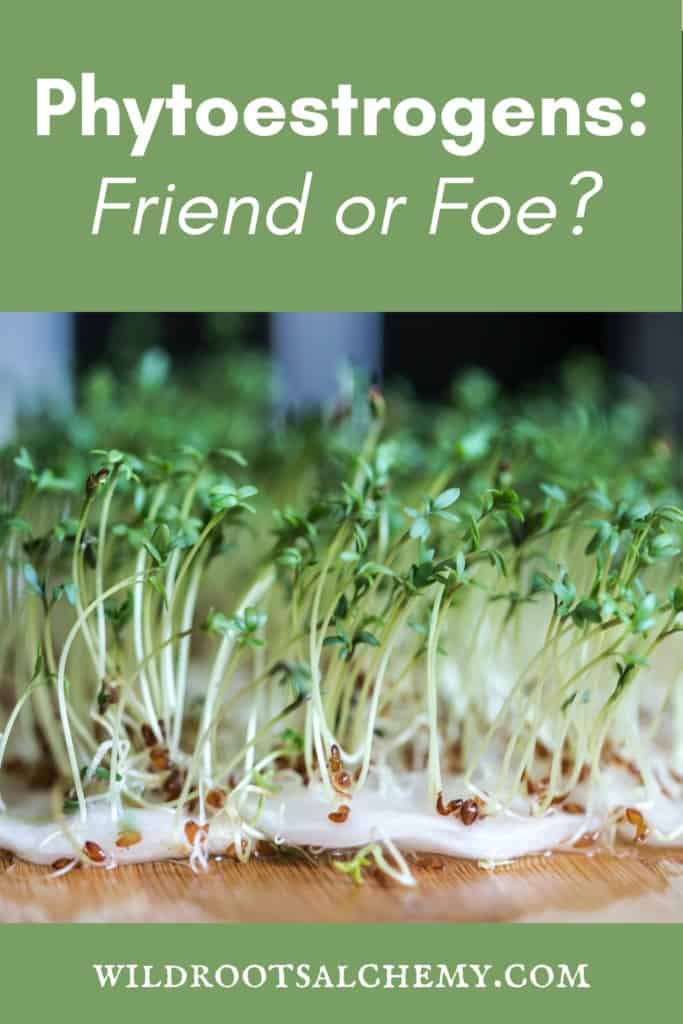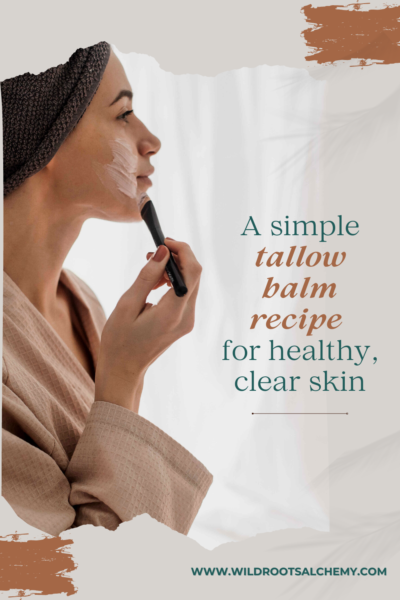
Phytoestrogens get a lot of flak in the nutrition and natural medicine communities. There is a bunch of confusion around whether or not phytoestrogens are actually harmful or good for you.
Well, I’m here to shed some light on the myth that phytoestrogens are your enemy!
Phytoestrogens are found in high amounts in sprouts (like alfalfa sprouts), many medicinal plants (like red clover), flax seeds, soy, and a host of legumes, grains, fruits, and vegetables.
Basically, if you eat plants (which I certainly hope you do!), you’re eating phytoestrogens ALL THE TIME.
So what are phytoestrogens?
Phytoestrogens are a type of xenoestrogen, which is an estrogen-mimicking substance found outside of our bodies. Yet not all xenoestrogens are considered equal. Synthetic xenoestrogens are human-made chemicals that bind and block your own estrogen receptors, creating a state of estrogen dominance. They are MAJOR endocrine disrupters, meaning they mess up the delicate balance of your hormones and disrupt the function of many hormone-dependent organ systems, like your reproductive system, immune system, and nervous system.
THESE xenoestrogens are the culprit of major hormonal dysregulation and environmental diseases. They should be avoided as much as possible.
Where are these harmful synthetic xenoestrogens found?
- Plastics
- Food preservatives (i.e. BHA)
- Artificial food dyes
- Conventional meat and dairy products
- Pesticides, herbicides & insecticides (found in conventional produce)
- Conventional cleaning products, laundry products, air fresheners
- Conventional personal care and skincare products (cosmetics, shampoo, body wash, deodorant, lotions, nail polish, etc.)
- Unfiltered tap water
- Birth control pills
But what about phytoestrogens?
While phytoestrogens are considered xenoestrogens, these plant compounds weakly bind to our own estrogen receptors–in contrast to synthetic xenoestrogens, which have much stronger effects.
In cases of estrogen dominance, phytoestrogens can help block some of your own estrogen from binding, modulating and balancing out the effects of your endogenous estrogen in comparison to your other hormones.
In cases of low estrogen (i.e. menopause), plant estrogen-mimickers can help to mildly stimulate your estrogen receptors, supporting the healthy and protective effects of estrogen.
Myth Busted: Balance is Key!
There’s usually no need to avoid phytoestrogens with a balanced, healthy diet. We have naturally evolved with these plant foods over the ages. We have not, however, evolved to the point of being able to handle massive amounts of endocrine-disrupting environmental pollutants. In order to avoid the negative effects of synthetic xenoestrogens, we can clean up our diets, our homes, and our environments as much as possible.
A Word on Soy
Soy gets called out for being a “bad” phytoestrogen. Organic, non-GMO soy in moderation is totally healthy. Conventional GMO soy, on the other hand, contains pesticides and herbicides (xenoestrogens!!!), not to mention the long list of the negative health effects due to GMO produce.
Large amounts of dietary soy can have some detrimental effects, but not necessarily because of the phytoestrogens: soy contains some anti-nutrient compounds that can bind up essential nutrients if it is consumed in excess, especially if it is unsoaked or unsprouted.
What are your thoughts and perspectives on phytoestrogens? I’d love to hear—comment below!
Disclaimer: It’s always important to check with your doc before making any major nutritional changes. Some foods in excess can interact with certain medications or be detrimental for certain health conditions, such as hormone-dependent cancers.
Photo in featured image courtesy of Milada Vigerova.





